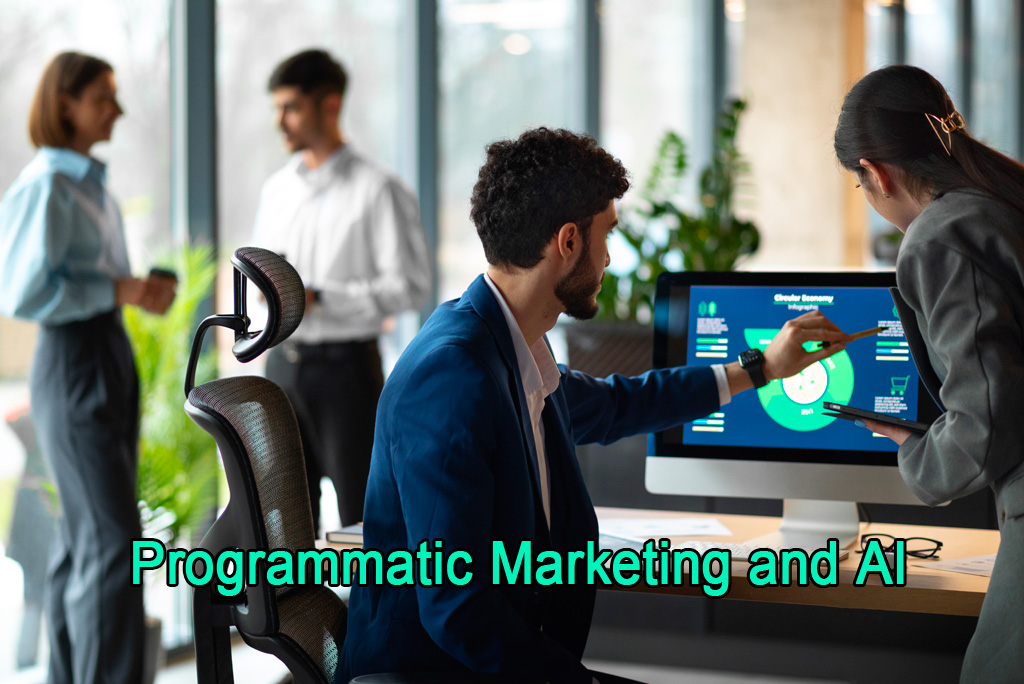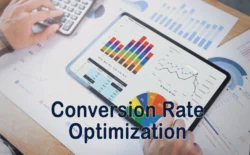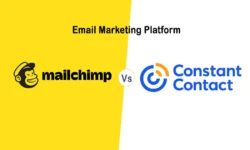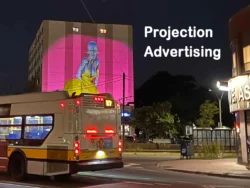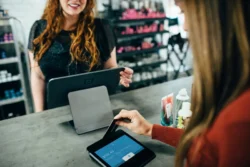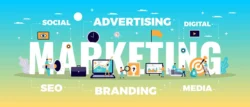Remember when digital advertising meant manually placing banner ads and hoping for the best? Those days are long gone. Today’s marketers are dealing with a completely different reality – one where AI systems bid on ad space in milliseconds, predict which customers are most likely to buy, and personalize campaigns for millions of users simultaneously. It sounds like science fiction, but it’s just another Tuesday in 2025.
This is the world of programmatic marketing powered by artificial intelligence, and it’s transforming how businesses find and convert customers. Companies using AI in their marketing strategies are seeing 25-30% increases in conversions and revenue – not because they’re spending more, but because they’re spending smarter. The technology handles the heavy lifting of data analysis and real-time optimization, while marketers focus on strategy and creativity.
This article breaks down how programmatic marketing and AI work together to revolutionize lead generation and sales. We’ll explore the latest trends shaping 2025, examine real-world case studies, and address the challenges businesses face when implementing these powerful technologies. Whether you’re a seasoned marketer or just trying to understand the future of digital advertising, you’ll discover how these tools can transform your customer acquisition game.
What is Programmatic Marketing?
Programmatic marketing automates the process of buying and selling digital ad inventory using sophisticated algorithms and data analytics. Unlike traditional advertising, which relies on manual negotiations, programmatic marketing employs real-time bidding (RTB), demand-side platforms (DSPs), supply-side platforms (SSPs), and data management platforms (DMPs) to deliver ads efficiently. According to eMarketer, the programmatic advertising market is projected to grow from $23.50 billion in 2024 to $235.71 billion by 2033, achieving a compound annual growth rate (CAGR) of 29.20%. This growth is fueled by increasing digital ad spend and the demand for data-driven targeting.
Key Components of Programmatic Marketing
- Real-Time Bidding (RTB): An auction-based system where ad impressions are bought and sold in milliseconds as users visit websites or apps.
- Demand-Side Platforms (DSPs): Tools that allow advertisers to purchase ad inventory across multiple ad exchanges efficiently.
- Supply-Side Platforms (SSPs): Platforms that enable publishers to manage and sell their ad inventory to advertisers.
- Data Management Platforms (DMPs): Systems that collect, store, and analyze audience data to create targeted advertising campaigns.
- Ad Exchanges: Digital marketplaces that connect DSPs and SSPs to facilitate ad transactions.
Programmatic marketing optimizes ad delivery by targeting specific demographics, behaviors, and interests, ensuring ads reach the most relevant audiences with minimal waste.
The Role of AI in Programmatic Marketing
AI enhances programmatic marketing by introducing advanced data processing, predictive analytics, and automation capabilities. By analyzing vast amounts of data in real time, AI enables marketers to make smarter decisions, personalize campaigns, and optimize performance. In 2025, AI-driven lead targeting is a basis of programmatic marketing, with predictive intent analysis and multi-signal intelligence improving lead qualification and conversion rates.
How AI Enhances Programmatic Marketing
- Audience Segmentation: AI analyzes user data (e.g., browsing history, purchase behavior, and demographics) to create precise audience segments, ensuring ads reach high-intent prospects.
- Predictive Analytics: AI predicts user behavior, such as likelihood to purchase, enabling marketers to target high-value leads. For example, predictive analytics can increase conversion rates by 25%.
- Dynamic Creative Optimization (DCO): AI generates personalized ad creatives in real time, tailoring visuals, copy, and calls-to-action to individual users.
- Bid Optimization: AI adjusts bids in RTB auctions to maximize ROAS while staying within budget constraints.
- Fraud Detection: AI identifies and mitigates fraudulent activities, such as fake clicks or bot traffic, ensuring ad budgets are spent on genuine interactions.
- Conversational Intelligence: AI-powered voice agents and chatbots provide human-like engagement, with 80% of customer service interactions expected to be AI-driven by 2025.
- Customer Journey Mapping: AI tracks user interactions across touchpoints, providing insights into the most effective channels and strategies for lead nurturing.
Case Study: SuperAGI’s Agent Swarms
SuperAGI’s Agent Swarms, an AI-driven tool, has demonstrated the power of predictive intent analysis by personalizing cold email campaigns at scale. This approach resulted in a 25% higher open rate and a 30% increase in response rates, showcasing AI’s ability to enhance lead generation.
Combining Programmatic Marketing and AI for Lead Generation
Lead generation involves attracting and converting prospects into potential customers. Programmatic marketing, powered by AI, streamlines this process by delivering highly targeted campaigns that engage prospects at scale. In 2025, the shift towards privacy-first approaches, such as leveraging first-party data and alternative identifiers like RampID and UID 2.0, ensures compliance with regulations like GDPR and CCPA while maintaining targeting precision.
Strategies for AI-Driven Programmatic Lead Generation
- Hyper-Targeted Campaigns: AI analyzes first-party and third-party data to identify high-intent audiences. For example, a B2B software company can target IT decision-makers who have recently visited competitor websites or searched for relevant keywords.
- Lookalike Audiences: AI identifies users with similar characteristics to existing customers, expanding reach to new prospects likely to convert. For instance, an e-commerce brand can use AI to find lookalike audiences based on its top-spending customers.
- Retargeting with Precision: AI-driven retargeting delivers personalized ads to users who have interacted with a brand but haven’t converted, such as abandoned cart visitors. A travel agency might retarget users who viewed a vacation package with tailored discount offers.
- Lead Scoring: AI assigns scores to leads based on behavior, demographics, and engagement level, prioritizing high-value prospects. A financial services firm could score leads based on interactions with a loan calculator tool.
- Cross-Channel Integration: AI unifies programmatic campaigns across channels (e.g., display, social media, video, and email) for a seamless customer experience. A retailer might deliver consistent messaging across YouTube pre-roll ads, Instagram stories, and email campaigns.
- Multi-Signal Intelligence: AI combines data points like behavioral triggers and buying signals to enhance lead qualification, improving conversion rates by 25%.
Benefits for Lead Generation
- Efficiency: Automation reduces manual effort, allowing marketers to focus on strategy.
- Scalability: AI processes large datasets to target millions of users without compromising precision.
- Personalization: Tailored ads increase engagement and conversion rates.
- Cost-Effectiveness: Optimized bidding and targeting reduce wasted ad spend.
- Privacy Compliance: First-party data and contextual targeting ensure compliance with privacy regulations.
Statistics on Lead Generation Impact
| Metric | Impact |
|---|---|
| Conversion Increase | Up to 25% increase in conversions with predictive analytics |
| Response Rates | 30% increase in response rates with AI-driven personalization |
| Lead Qualification Time | Reduced by up to 30% with predictive analytics |
| Ad Spend Efficiency | Over 80% of display ad dollars via programmatic direct/PMPs |
Driving Sales with AI-Powered Programmatic Marketing
AI-driven programmatic marketing converts leads into customers by optimizing the sales funnel and enhancing customer experiences. In 2025, conversational intelligence and real-time optimization are key drivers of sales success, with AI-powered chatbots boosting revenue by 7-25% through real-time engagement.
Strategies for Sales Optimization
- Dynamic Pricing and Offers: AI analyzes user behavior and market trends to deliver personalized pricing or promotional offers in real time. For example, an online retailer can offer a limited-time discount to users who frequently browse high-value items.
- Behavioral Triggers: AI identifies key moments in the customer journey (e.g., time spent on a product page) to trigger targeted ads or follow-up emails. A SaaS company might send a personalized demo offer to a lead who watched an entire product webinar.
- Upselling and Cross-Selling: AI recommends complementary products or services based on user preferences and purchase history. A streaming service could promote a premium subscription to users who frequently watch exclusive content.
- Post-Purchase Engagement: AI-driven campaigns nurture existing customers with loyalty programs, feedback requests, or personalized recommendations to encourage repeat purchases. A fitness brand might target recent buyers with ads for workout accessories.
- Attribution Modeling: AI tracks the effectiveness of each touchpoint in the sales funnel, helping marketers allocate budgets to high-performing channels. A car dealership could use AI to determine whether social media ads or search ads drive more test-drive bookings.
- Conversational Intelligence: AI-powered voice agents and chatbots provide human-like engagement, improving customer satisfaction. Domino’s Pizza reported a 25% increase in sales with AI voice agents.
Benefits for Sales
- Higher Conversion Rates: Personalized ads and offers resonate with prospects, increasing purchase likelihood.
- Improved Customer Retention: AI-driven post-purchase campaigns build loyalty and reduce churn.
- Data-Driven Decisions: Attribution insights ensure budgets are allocated to effective strategies.
- Real-Time Optimization: AI adjusts campaigns on the fly to maximize sales outcomes.
Case Study: Salesforce Einstein
A marketing agency using Salesforce Einstein prioritized leads based on conversion likelihood, resulting in a 25% increase in conversion rates and a 30% boost in sales productivity. This demonstrates AI’s ability to streamline sales processes and enhance outcomes.
Latest Trends in 2025
The programmatic marketing landscape in 2025 is shaped by several key trends:
- AI-Driven Lead Targeting: Companies use AI to analyze vast datasets for precise lead targeting, improving conversion rates by 25%.
- Privacy-First Approaches: With third-party cookies phasing out, first-party data and alternative identifiers like RampID and UID 2.0 are critical. Contextual targeting and geotargeting ensure privacy-compliant ad placements.
- Real-Time Optimization: AI enables continuous campaign adjustments, ensuring peak performance. Platforms like Bannerflow monitor and tweak ads in real time.
- Generative AI in Content Creation: AI creates personalized content at scale, enhancing engagement and reducing manual workload.
- Synthetic Influencers: AI-generated influencers offer new ways to connect with audiences, providing real-time interaction capabilities.
- Market Growth and Consolidation: The programmatic market is projected to reach $235.71 billion by 2033, with increased ad tech consolidation driven by antitrust rulings.
Challenges and Considerations
While AI-powered programmatic marketing offers significant advantages, businesses must address potential challenges:
- Data Privacy: Compliance with regulations like GDPR and CCPA is critical to maintain user trust.
- Ad Fatigue: Over-targeting can annoy users, necessitating frequency capping and creative variety.
- Integration Complexity: Combining AI tools with existing marketing stacks requires technical expertise.
- Cost of Implementation: Advanced AI solutions may involve upfront investment, though long-term ROI often justifies the cost.
Best Practices for Success
- Invest in Quality Data: Ensure access to accurate first-party data to fuel AI algorithms.
- Test and Iterate: Run A/B tests to identify effective creatives, channels, and targeting strategies.
- Leverage Multi-Channel Strategies: Combine programmatic ads with email, SMS, and social media for a cohesive approach.
- Monitor Performance Metrics: Track KPIs like cost per lead (CPL), conversion rate, and ROAS to measure success.
- Partner with Experts: Work with experienced DSPs, SSPs, or agencies to maximize campaign effectiveness.
Future Trends
Looking beyond 2025, the future of programmatic marketing and AI includes:
- Voice and Visual Search: Optimizing ads for voice assistants and image-based searches.
- Contextual Intelligence: Placing ads in relevant content environments based on sentiment or themes.
- Zero-Party Data: Using voluntarily shared data for personalized campaigns amid privacy concerns.
- Advanced Attribution: AI-driven models to track offline conversions and long-term customer value.
- Emerging Technologies: Potential advancements in natural language processing and quantum computing could further enhance data analysis and campaign optimization.
Conclusion
The synergy of programmatic marketing and AI is revolutionizing lead generation and sales by offering precision, scalability, and personalization. With tools like predictive analytics, conversational intelligence, and real-time optimization, businesses can achieve significant ROI, with some reporting up to 30% revenue increases. However, careful management of data privacy and implementation challenges is essential to fully harness this transformative approach. As the programmatic advertising market continues to grow, projected to reach $235.71 billion by 2033, AI-driven strategies will shape the future of digital advertising, enabling businesses to stay competitive in an evolving landscape.
